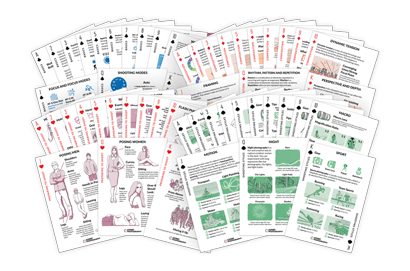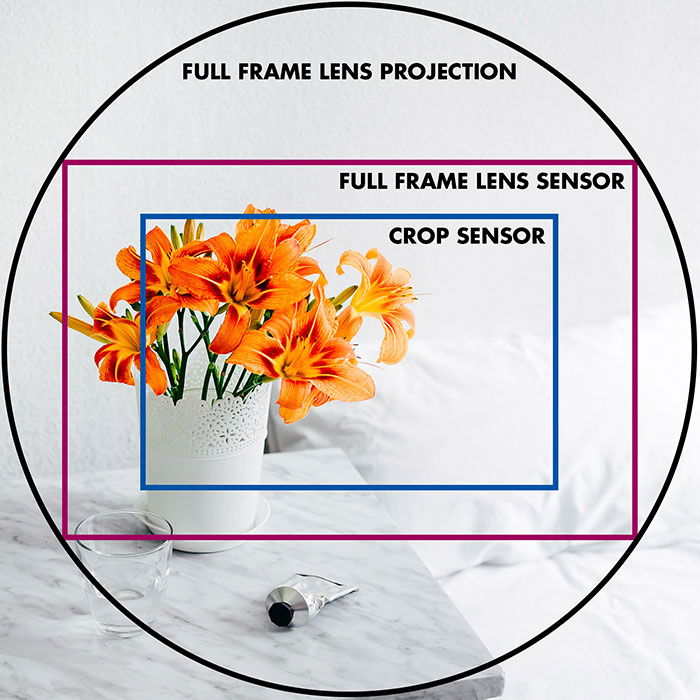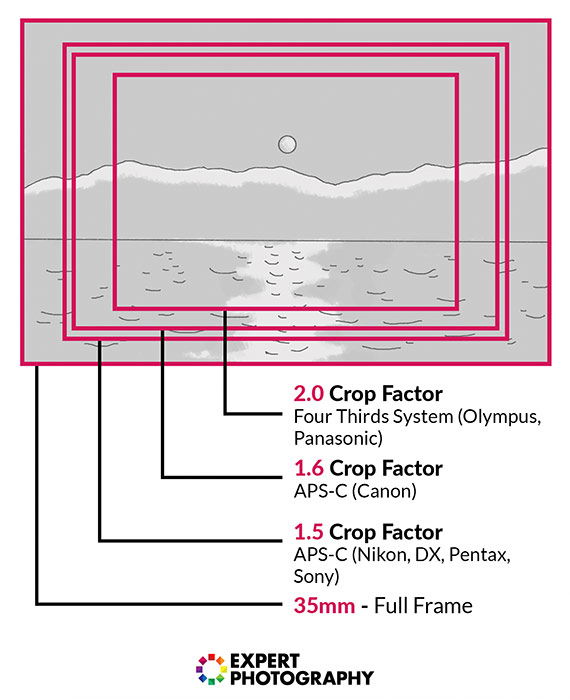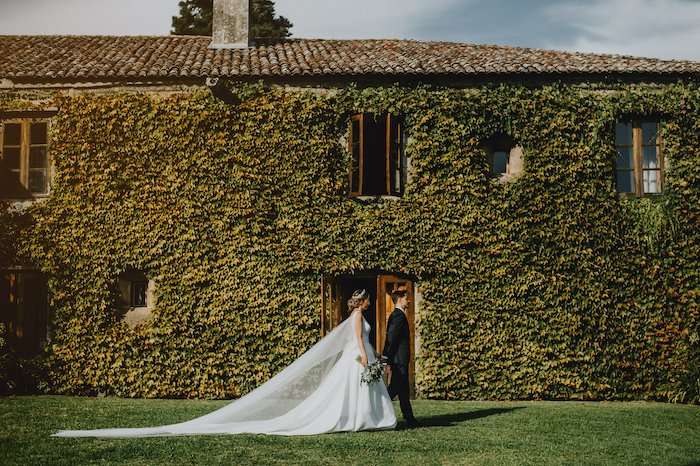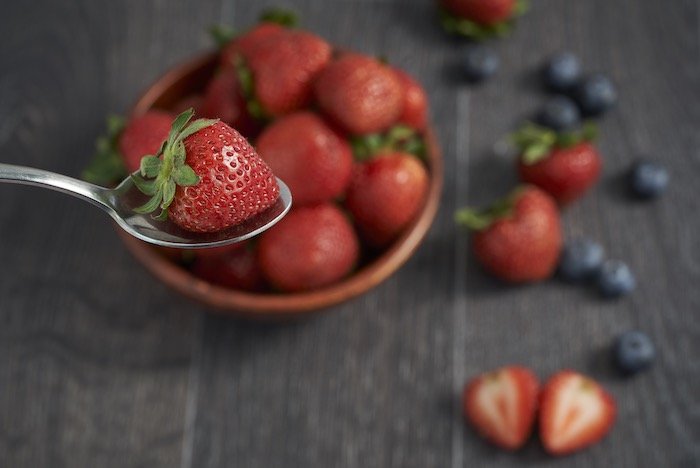We hope this article helps you decide which one suits your needs as a photographer better. We let you know what full full frame and crop sensors are and what each does best. And hopefully, you will learn how to take advantage of each option to take better pictures. [ExpertPhotography is supported by readers. Product links on ExpertPhotography are referral links. If you use one of these and buy something, we make a little bit of money. Need more info? See how it all works here.]
Full Frame Vs Crop: Exploring the Difference in Camera Sensors
A camera sensor is the rectangular, photosensitive surface in your digital camera. It records the scene projected through your circular lens. The sensor detects light waves. Then it turns the recorded information into electric signals and, eventually, an image.
What is a Full Frame Sensor?
A full frame sensor for DSLRs was derived from film photography. It was created so photographers could use their film lenses on DSLRs. Essentially, a full frame sensor is based on the 35mm frame used in film photography. So full frame cameras have a sensor size of 36mm × 24mm.
What is a Crop Sensor?
Any sensor with a crop factor smaller than a full frame sensor is called a crop sensor. It’s called a crop sensor because it effectively “crops” the full frame image. The smaller sensor creates a narrower field of view.
What is Crop Factor?
The crop factor is a ratio. It’s the diagonal of the crop in comparison with the 35mm full frame diagonal (which is 43.3mm). The different crop factors are described as multipliers of the full frame sensor. And sections of an image you see on a full frame sensor are out of the frame on a smaller sensor.
These are the most popular crop sensor sizes in use today with DSLRs:
2x Crop Factor: The Micro Four Thirds (MFT) system uses this. MFT has an aspect ratio of 4:3 compared to the standard 3:2. You can find 2.0x crop sensors, mostly in Panasonic and Olympus cameras. 1.6x Crop Factor: Canon solely uses this. Most of their consumer-level cameras have 1.6x crop sensors. It’s also called the Canon APS-C. 1.5x Crop Factor: Every camera brand, except Canon, manufactures its APS-C cameras with a 1.5x crop factor. It’s the standard and most widespread crop sensor.
Practically, what does this mean? Let’s say you place a 70mm lens on a camera with a 1.5x crop factor (i.e., any Nikon DX body). You will see an equivalent image of 105mm (70mm x 1.5) in terms of focal length.
Pros and Cons of a Full Frame Sensor
Full frame sensors are primarily designed for professionals or serious photography enthusiasts. Are you shooting large-scale commercial projects or even professional gigs like wedding photography? Then you’ll probably want a camera with a full frame sensor. They’re a better fit for large-scale prints and higher-end projects.
Better Image Quality and Performance in Low Light
A full frame sensor generally produces higher-resolution images than crop sensors. That’s because they let in more light and detail. And for the same reason, they’re also better in low-light conditions. They provide sharper, clearer images without setting higher ISOs. So they have less noise.
Broader Dynamic Range
Dynamic range refers to the range of light exposure your camera captures. The dynamic range of a full frame sensor is much broader. This means you can take better high-contrast images. Plus, you can more easily recover details in dark shadows and bright highlights (if you’re shooting in RAW)… more than you would with a crop sensor.
Shallower Depth of Field
Your image’s depth of field relies a lot on your lens and aperture. But a full frame sensor can help provide a shallower depth of field. You get more bokeh with a full frame sensor than a crop sensor if you use an equivalent lens with the same aperture. For example, an 85mm lens with a full frame sensor provides a similar view as a 50mm lens with a crop sensor. But the bokeh is larger with a full frame sensor. This is helpful for portraits, food photography, and photos with blurred backgrounds.
Higher Costs
A downside of full frame cameras? They are much more expensive than ones with crop sensors. But we’ve already discussed the reasons for that. In most cases, if you need a full frame sensor, it’s worth buying. And it will pay off in the long run. Besides the full frame camera body cost? Full frame lenses are also more expensive than ones for crop sensors. Plus, you must buy lenses specifically designed for full frame sensors.
Pros and Cons of a Crop Sensor
Are you primarily taking photos in your spare time or sharing pictures on social media? If so, you can easily use a camera with an APS-C sensor or even a smaller crop sensor. But more and more niche professionals are using them. They’re discovering the benefits of using crop sensor cameras in their fields of work.
More Compact Size
Crop sensor cameras are generally smaller in size and lighter. That means that they’re more portable than full frame cameras. (Some mirrorless cameras have even smaller sensors these days. And they are providing even more portability than ever.)
Crop Factor Benefits
Are you photographing sports, wildlife… or anything that requires you to get closer to the action? Then you’ll value that 1.5x to 2x crop magnification. The crop factor of your camera applies to every lens you put on it. Because the view is cropped, your lens is magnified. This is very helpful with telephoto lenses because it extends their reach exponentially.
Lower Costs
Crop sensor cameras are smaller and much cheaper to manufacture. This can be a big consideration if you’re looking for a budget camera. And if you’re not sure if you want to spend much money on photography? Crop sensor cameras are the sensible choice to begin with.
More Noise and Less Sharpness
Because of their smaller surface, crop sensors collect less light and details. This results in less sharpness and more noise in images. Also, the density of pixels on crop sensors is usually higher. And they need more resolving power from lenses. So a sharp lens on a full frame might not produce the same sharpness on smaller sensors… even if both sensors have a similar resolution. Manufacturing sharp lenses for crop sensors is thus actually harder. So you must be careful when buying such lenses. But crop sensors have fairly high resolutions of up to 32 MP.
Conclusion
So, full frame vs crop sensor? Which one is best? There is no easy way to decide whether a crop sensor or a full frame sensor camera is for you. It depends on several considerations, mostly around your budget and intended use. Suppose you need the best low-light performance or very high resolution. Then you can’t avoid going full frame. And those features will cost you. But suppose you’re using a telephoto lens to photograph objects far away. Or perhaps you want portability. In those cases, a crop sensor camera gets you closer to your subject. And it lets you travel lighter at a relatively lower cost. I have used both full frame and crop sensor cameras for different purposes. So if you have to choose one type of camera, think through which will serve you best in the long run. In the end, a camera is just a tool. And you’ll be able to create fantastic images whatever size sensor you choose.
